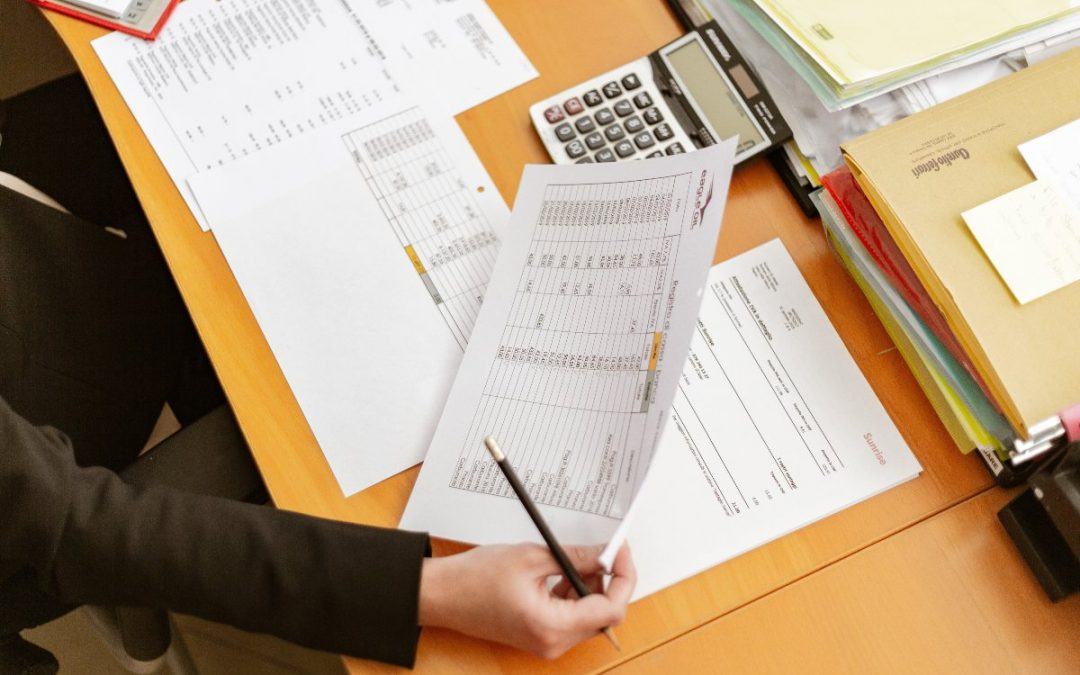Financial Management for Interior Designers
Starting and growing your own business is phenomenally rewarding. But, this satisfaction and fulfillment come with many challenges. Hopefully, you’re not surprised that running a design services business requires you to do a lot more than getting coffee with potential clients and update your social media with exciting announcements or projects.
Successful business management requires you to spend part of your time on administrative tasks to help keep things running smoothly. In fact, most small business owners spend up to 16 hours a week on routine work that doesn’t include core business deliverables.
Financial management is one of the most important functions of running a company. In a small business, the responsibility to manage and monitor finances always falls on the business owner. However, we understand if financial jargon leaves your head spinning and you dread creating spreadsheets. In this article, we’ll break down business finances in detail, and review top financial management tips for interior design businesses.
Read also – How To Build A Strong Interior Design Brand?
Image Credit: Pilot Bookkeeping
Why is Financial Management Essential for Interior Design Businesses?
All businesses have to carefully manage their finances. Unless you’re a large business with more than 20 or 30 employees, you probably don’t have a CFO or other individual that’s solely responsible for financial management. Just how important is financial management? According to a study by U.S. Bank, approximately 82% of small business failures are due to cash flow problems. This means that most small businesses might actually succeed if they were able to carefully plan, monitor, and control their finances.
Without effective financial management, your interior design business could experience any of the following impacts:
- Late payments to vendors. Some vendors might be understanding, but others might rely on collection agencies to get payment from you, which can be an enormous headache and embarrassing if you’re unable to remit payment. Ultimately, failure to pay invoices can irreparably damage your business’ credit history, making it difficult to secure loans in the future.
- Missed or inaccurate payroll. If you have employees then you understand the pressure of getting payroll run on time and correctly. Entering employee information, making adjustments, and keeping up with regulations is difficult. Payroll errors can easily cause your employees to start looking elsewhere for work.
- Inadequate cash flow to support your operations. Cash flow is the lifeblood of every single business. If you don’t take the time to understand your cash flow ratio then you’re much more likely to overspend or miss time expenses, putting your business in a vulnerable position.
- Poor expense management and tracking. Tracking your expenses is critical for many reasons, but particularly because accurate reporting is required if you plan to write off expenses (which you should). Inconsistencies or irregularities in your tax filings can result in an audit by the IRS, which might mean the discovery of back taxes owed or a fine.
- Undercharging for design projects because your markup is too low, or being forced to work with someone that is not an ideal client.
Read also – 12 Expert Tips To Get Clients For Interior Design Business
Image Credit: Diversity Women Magazine
Top 10 Financial Management Tips for Interior Designers:
1. Understand your cash flow requirements and how they affect your bottom line. In its most basic terms, cash flow describes the balance between your receivables (outstanding invoices or other payments that will be received) and your accounts payable (all expenses you owe, usually called liabilities) and other operating expenses like salaries, benefits. Etc. There’s no exact answer for the amount that your company needs to make; it simply has to be enough to cover expenses and earn profits. If your cash flow ratio is 1:1 then your business is bringing in as much money as it’s spending. In that scenario, your business is not profitable (meaning you made more money than you spent). Typically, you should try to have a cash flow ratio of greater than 1:1 because it means your business is profitable. As the owner, this can allow you to invest back in the business, pay yourself more, and realize more value in your equity (ownership).
2. Set up a business bank account to handle all invoicing, expenses, and other financial transactions. It’s not advised to mix the business finances with your personal bank account or credit cards. When it’s time to pay taxes you’ll be thankful that you have a clear and separate account of all business transactions.
3, Get a business credit card. While individuals often try to avoid debt, credit cards that are offered to businesses can help you earn perks. Plus, you can easily pay off the credit card at the end of every month. Credit cards are also a much easier way to make online purchases.
4. Seek outsourced support from a bookkeeper. A freelance CPA or other certified professional might be willing to give you a more competitive rate than a full-size firm. Partnership with a trusted professional can help you access invaluable resources and expertise, avoiding mistakes that have hurt countless other businesses. Additionally, you’ll be able to spend your time on more valuable projects like new business development and client relationships.
5. Use basic bookkeeping software like Wave or Quickbooks to help with tracking, invoices, and reporting. These low-cost or free tools are an excellent way to conduct your own accounting if you’re just starting out or can’t afford to pay someone else. Plus, you’ll need a fast, simple way to send professional invoices to clients and keep track of whether they’ve been paid.
6. Keep close track of your expenses and save records of every purchase. Many new business owners don’t realize how big of a tax break they can get on eligible business expenses. How does this work? Well, qualifying business expenses lower your total operating revenue, and the government allows these expenses to be written off. What are qualifying business expenses? Here are some of the most common eligible expenses:
-
- Payroll
- Business meals
- Travel
- Equipment
- Software
- Outsourced services
- Rent
- Interest from business loans
7. Keep savings in the bank. Experts recommend aiming for 3-months of savings that would cover all operating expenses, even if you made no additional revenue in those months.
8. Create and follow a financial forecast. A basic financial plan will help you understand the overall financial health of your business and how to stay on track in the future. A forecast tracks your historical performance (earnings) and predictions for the upcoming period, typically on a quarterly basis. Information in a financial forecast will usually include a balance sheet, a cash flow statement, a margin analysis, a pricing strategy, and a cost of goods sold (COGS). A financial forecast is also included in a business plan, which will describe investments you plan to make in marketing, resources, etc.
9. Have a line of credit with a bank. Open lines of credit from a bank can be used as needed and often have lower interest rates than a standard business credit card. A line of credit is a great option for businesses that have healthy cash flow but occasionally need to quickly access financing for purchases. Since you only pay interest if you use the money, credit lines can be safer than a small business loan, which will require you to make payments every month.
10. Make smart investments in areas of your business that will help support growth. For example, if you’re bogged down with some of the business operations, it could be a smart idea to purchase a system or hire an outsourced partner to take on some of this work. There are simple ways to evaluate whether this is a good investment. If you know that you can bill $100 an hour for your work but it will only cost you $30 a month for a better project management system, this would probably be a good investment to make.
Read also – How To Generate More Leads For Interior Design Business?
How to Get a Business Loan for Your Interior Design Business?
Small business loans are a lifeline for many companies that have just launched or are expanding. There are also some advantages to servicing the debt, including the fact that you can write off the interest on a business loan as an expense. Private banks, non-profit organizations, and a variety of other public institutions (called lenders) provide loans through a government-sponsored intermediary.
While this might sound a little complicated, it’s not an overly difficult process. Typically, you will have a relationship with a local partner that can help guide you through the application process and provide advice or counsel on the best loan options to pursue.
Read also – Instagram and Pinterest Marketing for Interior Designers
Image Credit: Cayuse
4 Types of Business Loans for Interior Design Business:
1. SBA Loans
There are some unique advantages to these loans, including additional support from the issuing or intermediary partner, lower interest rates, and in some cases no requirement for collateral. Often, when you first apply for a loan, a traditional bank or lender will want some type of guarantee against the loan. In other words, they want to know that you have something of value that can be turned over in case you lose the ability to pay back the loan. For many small business owners, this type of asset could include equipment, their home, or other physical property. More information on SBA loans can be found on the SBA administration website.
2. Microloans
During the start phase or even the first year, small businesses often need small amounts of capital to help buy equipment, rent an office space, create marketing assets, etc. Microloans are funding options specifically designed to help very small businesses in the early stage get access to loans of $50,000 or less. In businesses with only 1 or 2 employees, this cash infusion can sustain 6 months of expenses or more. To learn more about how to apply for a microloan, or whether it’s right for your business, start here.
3. Term Loans
This funding option is the most traditional type of loan and describes what most people think of as a “business loan.” With a term loan, small businesses are able to borrow lump sums all at once and make fixed monthly payments with added interest. In cases where large amounts of money are borrowed, the lending institution will typically place a lien against a business or personal asset (meaning they can claim ownership if you fail to repay the loan).
4. Invoice Financing and/or Invoice Factoring
These financing models are designed especially for small, service-based businesses like an interior design firm that may have large outstanding invoices but need to cover expenses before the invoices are received. With both invoice financing and invoice factoring, the lending body will look at your total outstanding invoices and will pursue one of two options:
- They will provide you a loan based on the amount you will be paid once invoices are received. In this scenario, you are still responsible for collecting invoices.
- They will offer you a lump-sum payment and then assume responsibility for the collection of the invoices themselves. With this option, you will make less than the full amount of the outstanding invoices, but you will receive the money immediately and not be burdened with collections.
- While both of these options can be helpful for small businesses, be sure to consult a financial professional before making any decisions, and review all contracts carefully to ensure you aren’t locked into a damaging agreement.
Read also – Interior Design Fees
Image Credit: Quickbooks Intuit
Alternate Ways of Funding Your Interior Design Business
In addition to more traditional loan options, there are also many other ways to secure financing for your interior design business. Some popular methods include the following:
- Grants or funding for businesses that are founded and owned by minorities, women, veterans, or other marginalized groups.
- Start-up competitions are a relatively easy way to get smaller amounts of money if you’re able to create a compelling pitch for your business idea. To win these types of competitions, you’ll need to develop pitch templates that layout a road map for how you will make a business successful by meeting an unmet need in a new way.
- Find an investor who is willing to give you a loan to start the business. This will typically require you to pay back the loan with interest or to give the investor a percentage of equity in the business. However, if you’re able to borrow from a friend or family member, the terms of the loan could be highly favorable for both parties. There are also unique ways to structure these types of loans, including where the money is released in predetermined amounts based on your ability to reach specific growth goals.
Read also – How To Find Your Niche As An Interior Designer?
Start a Successful Interior Design Business With the Right Software
If you have the right business tools, each stage of the interior design process will be easier and more efficient. Foyr Neo is a one-stop-shop for all your design needs. The multifaceted design software has so many features to choose from that it makes it easier to visualize your design ideas more effectively.
- 60K + ready to use products
- Build Floor Plans, edit in 3D
- Drag and Drop Interface
- 4K Renders in minutes
Furthermore, it doesn’t take up a whole lot of space due to its incredible cloud computing feature. It saves time and money on licensing. Anyone can create absolutely remarkable home designs with these design tools. Foyr Neo is now available for a 14-day free trial, allowing you to explore the potential of infinite creation.













